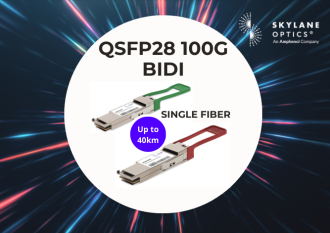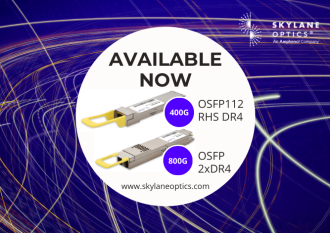Communication History

Communication History
Communication, by its definition describes a method of exchanging ideas over a channel among groups and individuals. From pre-historic times communication has been an integral part of human development and is evident in various cave paintings, scriptures. But one of the challenges of the older era was the outreach of messages. Most of the communication was either verbal or written which was accessible to fewer localized groups of population. Monarchs had messengers who carried their messages all the way to nearby kingdoms. This method of physically carrying written form of messages was later improvised to make the first postal system in Persia by King Cyrus the Great (550 B.C.). This method of sending physical letters has been running still now. However, with the advent of the industrial revolution there was a demand for quicker modes of message delivery systems. This led to the rise of telecommunication systems.

Fig 1 : The first electric Telegraph
The first electric Telegraph was built by Samuel Morse. He along-with Alfred Vail developed a telegraph terminal that could register messages on a tape. This prototype was tested successfully over a 5 kilometer line in 1838 and later over a 64 kilometer line from Washington D.C. to Baltimore in 1844. This piece of technology gained popularity very soon and thousands of cable lines were laid across the United States and across the Atlantic to connect Europe to the US. This invention was followed by voice transmission over a wire, called the Telephone. Alexander Graham Bell and Gardiner Greene Hubbard were the primary patent holders for this invention and they opened the first Telephone company which later evolved to AT&T the largest telephone company of the world. Telephone technology gained popularity soon and inter-city telephone lines were laid and telephone exchanges started coming up.

Fig 2 : Alexander Graham Bell makes the first telephone call
Guglielmo Marconi, on the other hand was experimenting with newly discovered radio waves in telecommunications, and later developed the first wireless telegraphy system. This development later helped the satellite communication system and introduced long range inter-continental telephony. As the satellite communication network grew fixed lines and submarine cables for long distance transmission became obsolete. They were expensive to establish, hard to maintain and needed amplification very often. With the second World War a lot of inventions and developments had come in the area of communication networks and wireless transmission and radio technology. The United States and Russia were in the space race leading to launch of various satellites into the orbit for surveillance, tracking(GPS, GLONASS) and monitoring. Communication technology was a result of the huge investments made in the space race by both the countries and newer technologies emerged through it. The Universities in California were also adding to the research in the field of communication by starting a project to connect computers to one another without passing through the central mainframe. This later took the form of ARPANET and various protocols, packetting mechanisms emerged around it to give the shape of today’s internet.

Fig 3 : The evolution of the internet
However, as the demand for communication networks increased the data transmitted over networks started growing and this often caused high latency and noise in conventional copper lines. Computers started getting into every household in the United States and so did the computer networks. But cables had the same drawbacks and with the increase in load in the network copper cables had to be replaced with something which was fast, had low losses and could be transmitted over long distances.

Fig 4 : Evolution of cables
This made investors of network companies to move towards optical fibre which was cheaper than copper to manufacture, could transmit over longer distances without amplification, had a better transmission rate. Moreover, a single cable could transmit multiple channels, using Wavelength Division Multiplexing. This makes fiber optics communication 100 times faster than conventional Ethernet cables. Moreover, there is no introduction of noise from electro mechanical phenomenon.

Fig 5 : The cross-section of a submarine cable
The internet, telephone lines, television channels depends on chunks of submarine cables which connect the entire world. At the core of theses cables is optical fiber which transmit at 100Gbits/s ie, around 3 million duplex voice calls or 90000 independent television channels. In an optical fiber network there are optical transducers connected at both ends of the cable which convert the electric signal into laser codes at the transmitting end and laser codes into electric digital signals at the receivers end. So far this communication network has proven to be both economical and efficient in handling the data requirements of the world. Even though satellite technology is much advanced and has a better outreach, it is expensive and cannot be commercialized easily.
One second in todays internet means:

Overall around 53 TB of data is transmitted every second over the internet and the high speed submarine cable links, the on shore cable network have made that possible. With the onset of Internet of Things, more and more devices are getting connected to the internet and load on these cable networks keep on increasing. New data centers are coming up every day and the infrastructure to maintain this entire global network lies on fiber optics in present day scenario.
Skylane Optics is a Belgian company, established in 1998, and a leading provider of transceivers for optical communication. We offer an extensive portfolio for the business, access, Data Center and metropolitan fiber optical markets.
We cover the European and South American market with a strong partner network and have offices in Belgium, Brazil, Sweden. Our products are characterized by high quality and performance. In combination with our strong technical support, we enable our customers to build cost optimized network solutions.
As a continent of pioneers and technological progress, North America is logically the next step on our map//our world market. A large stock, based in USA, will soon allow us to supply our partners and customers everywhere in the United States the next business day.
For more information : Contact us
References:
- https://mashable.com/2014/12/05/evolution-of-communication-brandspeak/#t8JM2f9V6Oqc
- https://en.wikipedia.org/wiki/History_of_telecommunication
- http://www.internetlivestats.com/one-second/
- https://en.wikipedia.org/wiki/Optical_fiber
- https://thoughtleaders.ng/evolution-of-the-internet-funny-stories-on-how-twitter-flickr-blogger-started/
- https://www.calcable.org/learn/history-of-cable/



